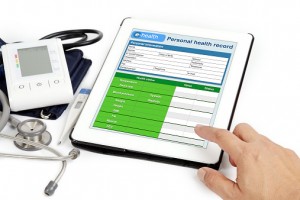Tips For Implementing An Electronic Medical Record System
 Over the last several years the landscape of the healthcare industry has been altered by a few significant changes to the system. One of these major changes is the introduction and implementation of Electronic Medical Record (EMR) systems at physicians’ offices, hospitals, clinics, and specialists across the country. EMR systems have changed the way that medical information is stored, viewed, and transmitted and have revolutionized the industry in doing so. EMR systems provide multiple major advantages over traditional paper based records, but they have also brought along a few problems for some people in the industry.
Over the last several years the landscape of the healthcare industry has been altered by a few significant changes to the system. One of these major changes is the introduction and implementation of Electronic Medical Record (EMR) systems at physicians’ offices, hospitals, clinics, and specialists across the country. EMR systems have changed the way that medical information is stored, viewed, and transmitted and have revolutionized the industry in doing so. EMR systems provide multiple major advantages over traditional paper based records, but they have also brought along a few problems for some people in the industry.
Steps To Take When Implementing an EMR System
In 2010, with the passing of American Recovery and Reinvestment Act of 2009 the Centers of Medicare & Medicaid Services (CMS) mandated that the nation’s healthcare industry needed to gradually implement and utilize EMR systems. They wanted to ensure that the EMR systems would provide “meaningful use” for the industry and its patients, and laid out guidelines that healthcare providers should attempt to meet in order reach this level of “meaningful use.” The “meaningful use” guidelines were broken down into 3 stages with the first requiring that healthcare facilities transfer their paper records into EMR format. While many facilities have made the switch to EMR technology, a large number of these facilities have had great difficulty in effectively implementing these systems. In response to this, we have come up with a list of steps that your practice should take if you are planning to implement an EMR system.
- Determine If Your Practice Is Ready To Make The Switch
In this beginning stage, it is recommended that you take a step back and assess your practice. Determine what the goals and needs of the practice are, what the financial situation is and if you can indeed afford the EMR system, and if your facility has the technological capabilities to implement the system. Ensure that you have answers to all these questions and if not, then you will need to make some adjustments to your practice which leads us to the next step.
- Develop Your EMR Implementation Plan
In this stage you will be building off the information that you gathered from your practice assessment. You should first map out how the practice’s current work flow is handled and then determine how the implementation of an EMR system will alter this work flow. You should then select a person to be in charge of the switch to the EMR system so that somebody is running the operation. Once you have selected a manger for the transition, you should then plan out who will and how you will transfer the paper charts into the EMR system. Lastly, you should think about any HIPAA privacy or security violations that you may face in the transition to an EMR system. Make sure you understand what the violations are so that you can plan accordingly to prevent them from happening.
- Decide Which EMR System is Right For You
This step is obviously one of the most important steps in the EMR implementation process. The EMR system that you decide to use should enable your facility to reach the goals that you established in the planning phase and be able to handle the tasks that you determined your new EMR system would take care of. The project leader, physicians, and staff members at the facility should all work closely together to determine which EMR system will fit the practice best. When selecting an EMR vendor, one of the best ways to determine if a particular EMR system is right for you is to provide the vendor with different examples of scenarios that may occur with patients and within the office. You can then evaluate the vendor’s demonstration on how the scenarios would be handled and determine which EMR system provided the best solution for you. Other things to consider when selecting an EMR system include: pricing, the amount of implementation support you will receive from the vendor, the amount of interoperability that the system has with other software and EMR systems, security measures, the vendor’s reputation and status, and if the EMR system will enable you to achieve “meaningful use” requirements.
In our next article, we will discuss the final 2 steps that your facility should take to best prepare yourself for the switch to EMR. If you would like immediate assistance with any aspect of an EMR system, please call or contact us today to learn how we can help.













